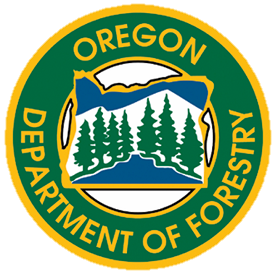Medford, Ore—June 10, 2024—A forest closure order that prohibits camping and/or long-term occupancy within the boundaries of National Forest System lands administered by the Rogue River-Siskiyou National Forest was recently signed by Acting Forest Supervisor Dan Quinones.
The order prohibits occupancy for more than 14 consecutive days in one location and more than 28 calendar days annually. All developed campgrounds and dispersed camping sites, including fee and non-fee sites within the described boundaries, are included.
The prohibition is in effect on lands described on the attached maps and description included in the order https://tinyurl.com/4rm76hem. The closure is in effect from June 5th, 2024, through June 5th, 2026, unless sooner rescinded.
“The Forest has communicated the proposed stay limit with external stakeholders, including local county commissioners, community and tribal leaders. They have expressed support for the two-week camping stay limit,” said Acting Forest Supervisor Dan Quinones.
Long term public use for camping purposes has increased in recent years. Following the stay- home executive order issued by the Oregon Governor in March of 2020, this increased use has intensified. Long term camping at high use sites and in general forest areas, especially along riparian corridors, is limiting opportunities for fair and equitable use of forest lands by other campers and forest users.
The popularity of the forest as a recreation area requires managers to effectively manage visitor use as well as provide adequate resource protection measures in an effort to balance use with impacts. This order will promote more equitable distribution of camping opportunities and other public lands access.
Current use is also leading to resource damage, which this order will ameliorate. Monitoring has shown that long term and unmanaged camping areas are often located in sensitive resource areas such as riparian zones. The most common impacts observed are to vegetation and soil and water resources, resulting from loss of vegetative cover, loss of organic litter and exposure, and compaction and soil erosion.
This order will also promote public health and safety. National Forest recreation facilities are not maintained to provide year-round and constant use by long-term forest users. In dispersed settings, sanitation facilities are not provided. Additional resource impacts from unmanaged camping include impacts from human waste, as toilet paper and human waste are improperly disposed in sensitive areas and may contaminate water sources. Trash and spilled or discarded food may attract wildlife to campsites and create unsanitary conditions for other forest visitors.
As a result, visitors and forest staff are experiencing an increase in risks to health and safety, and there is significant potential for degradation in water quality, resulting from improper human waste disposal. Vandalism has also increased significantly in areas affected by long-term residency.
Camping prohibitions respond to a need to protect visitor health and safety as well as forest natural resources. By limiting the duration of camping stays, all forest visitors will have a fair and equitable opportunity to visit and enjoy National Forest System lands.





